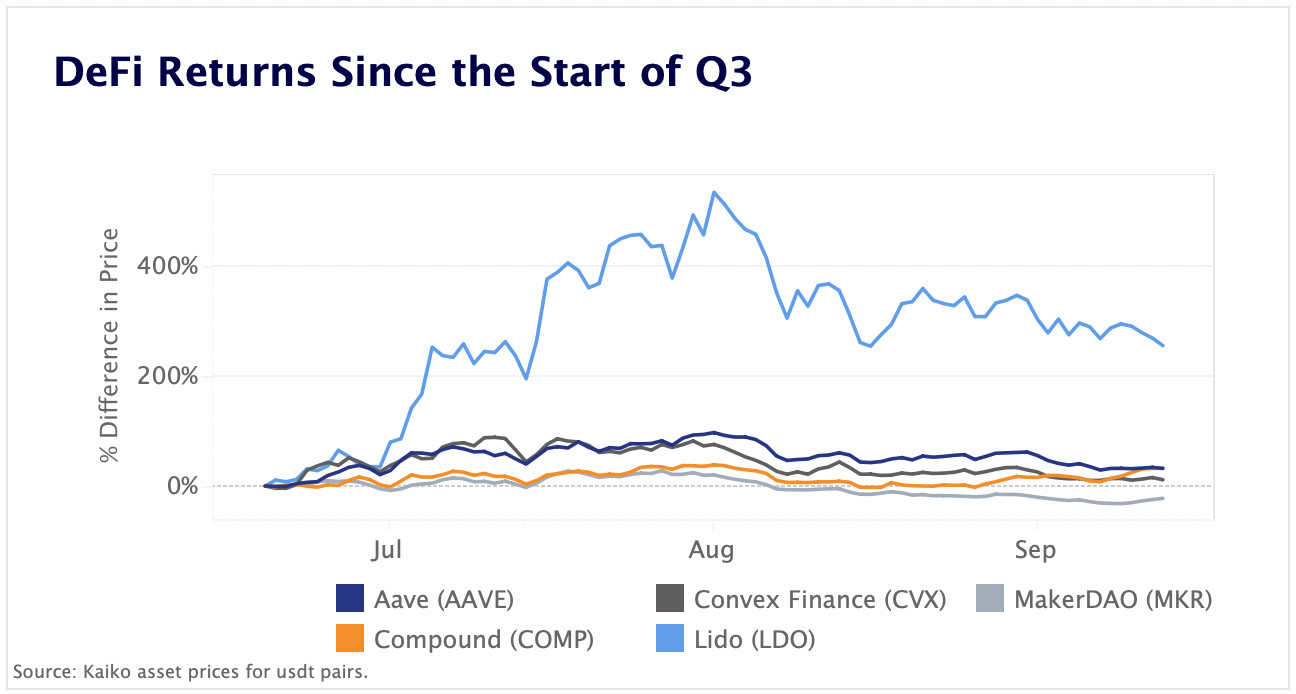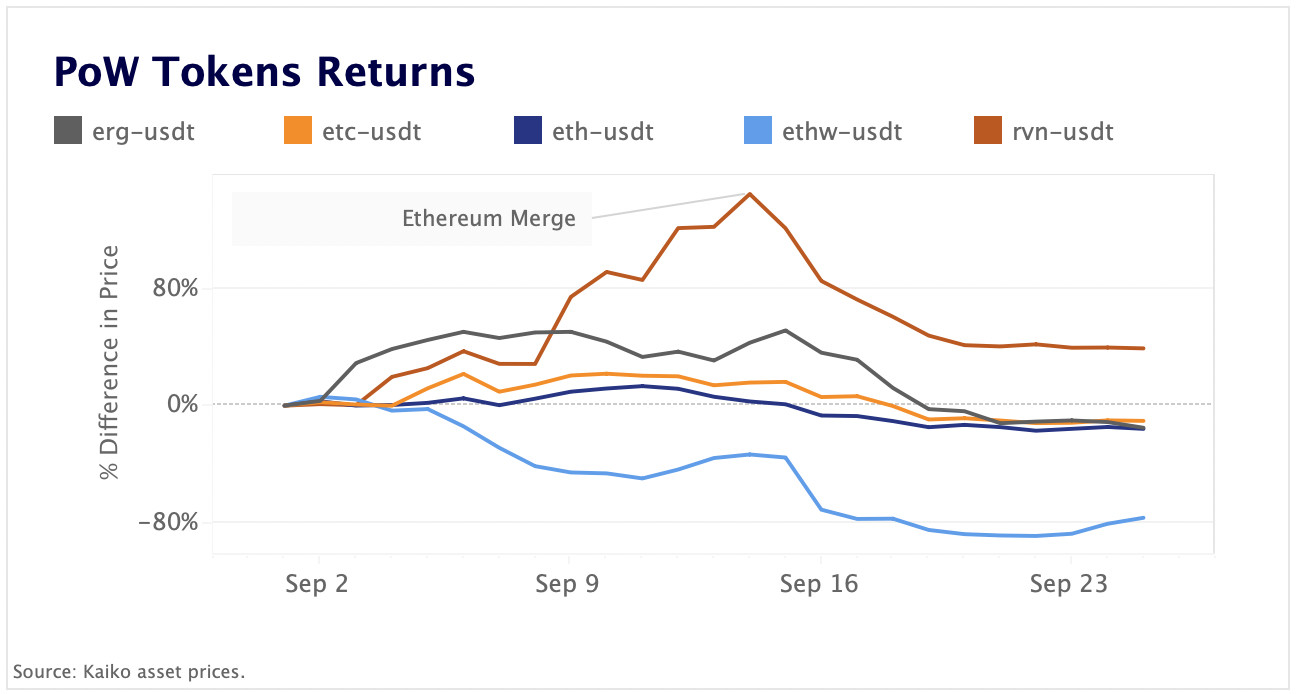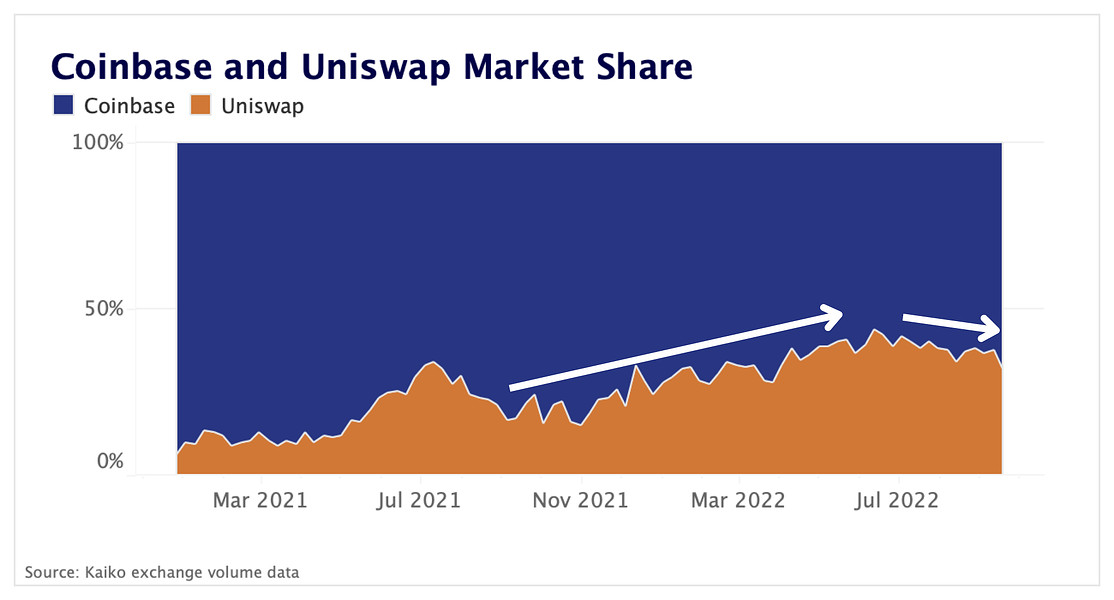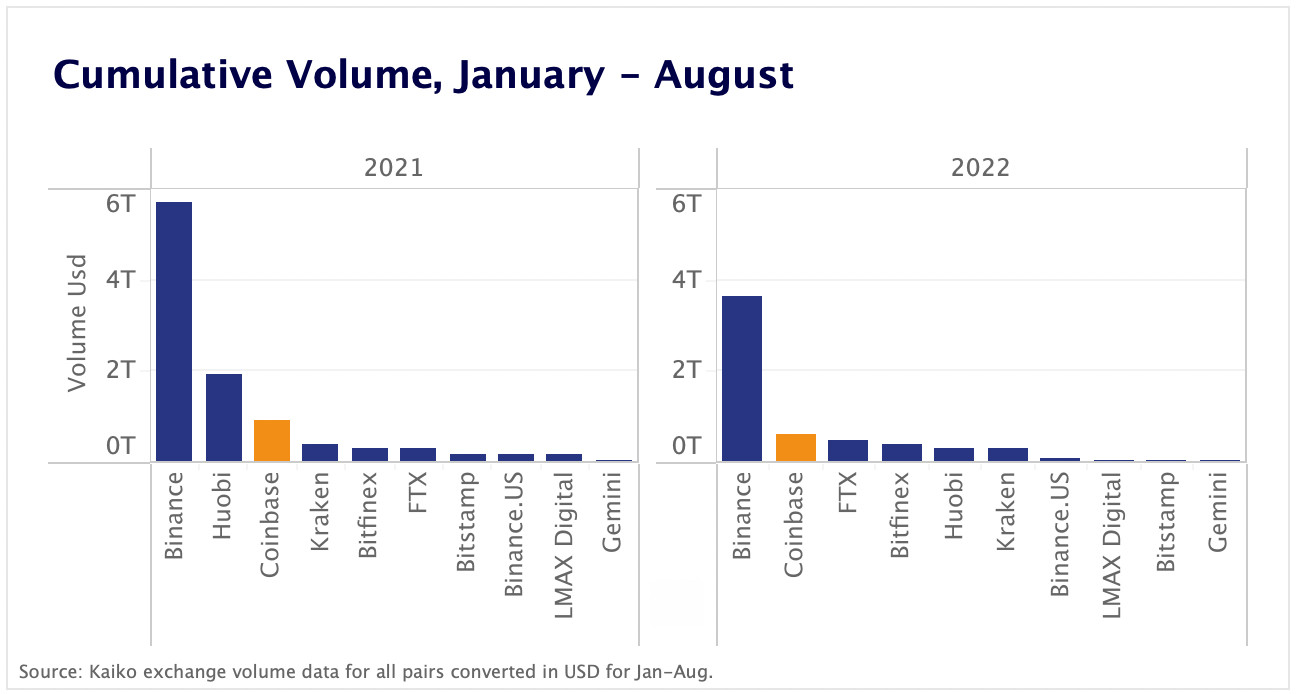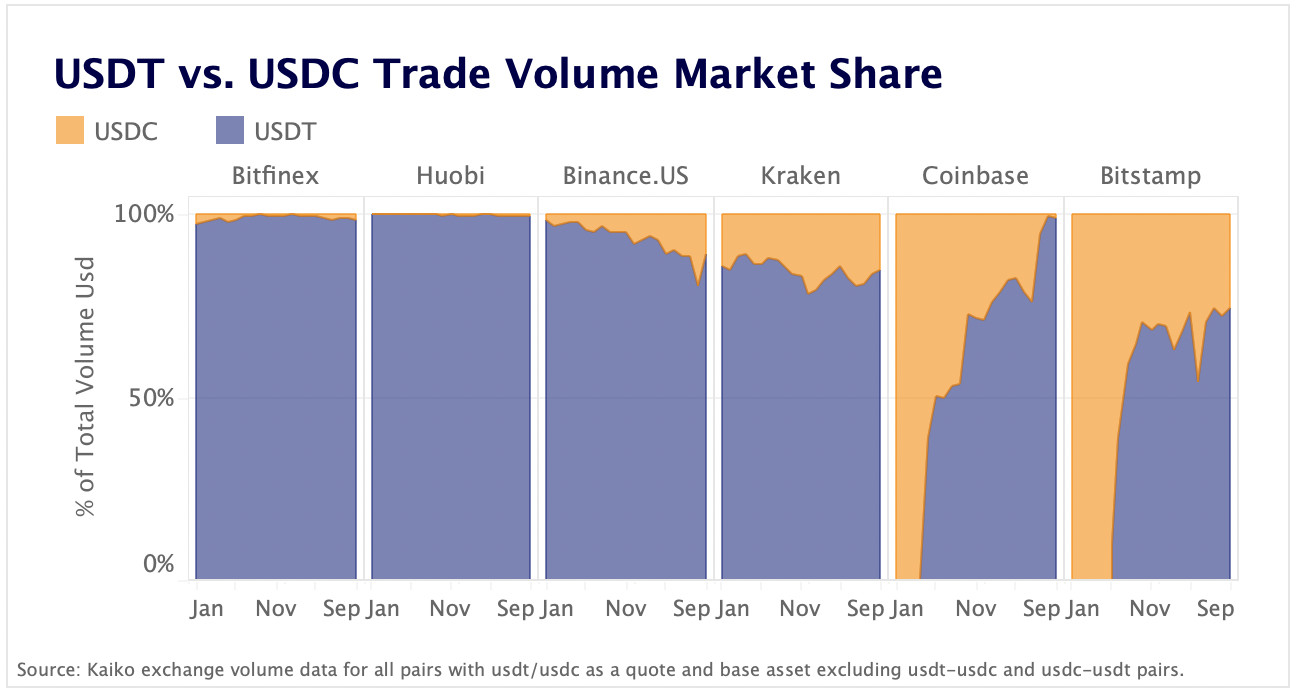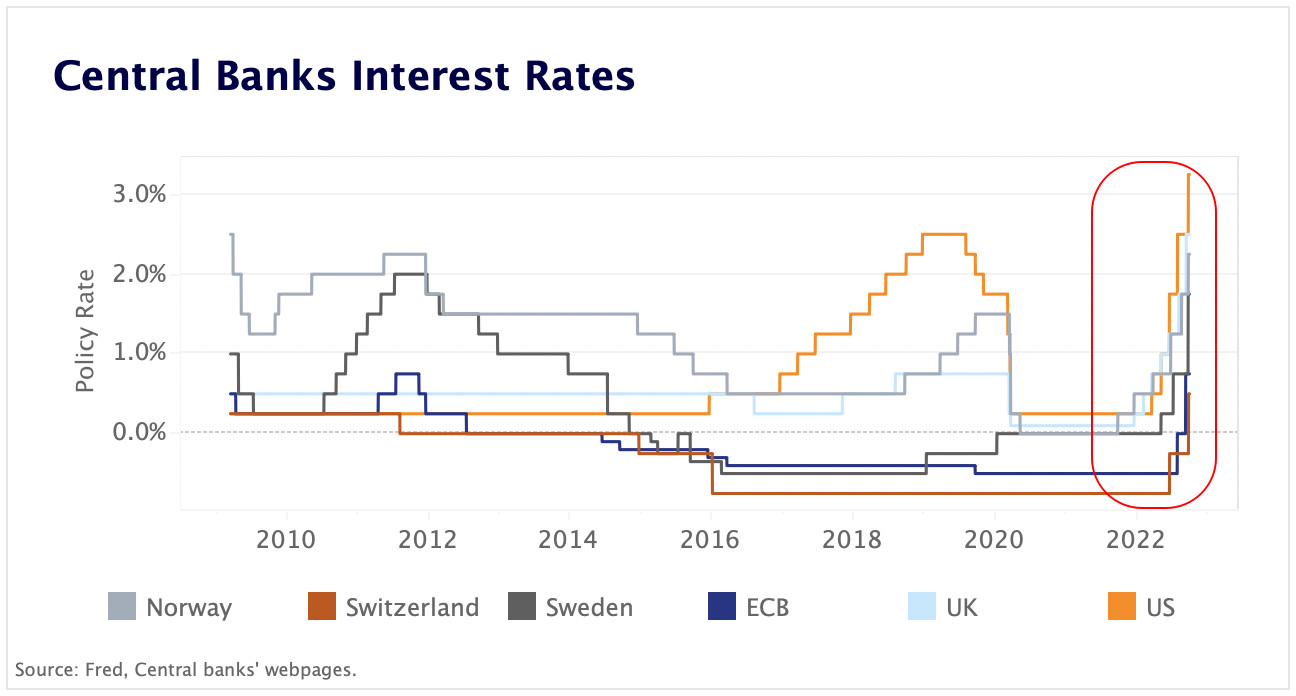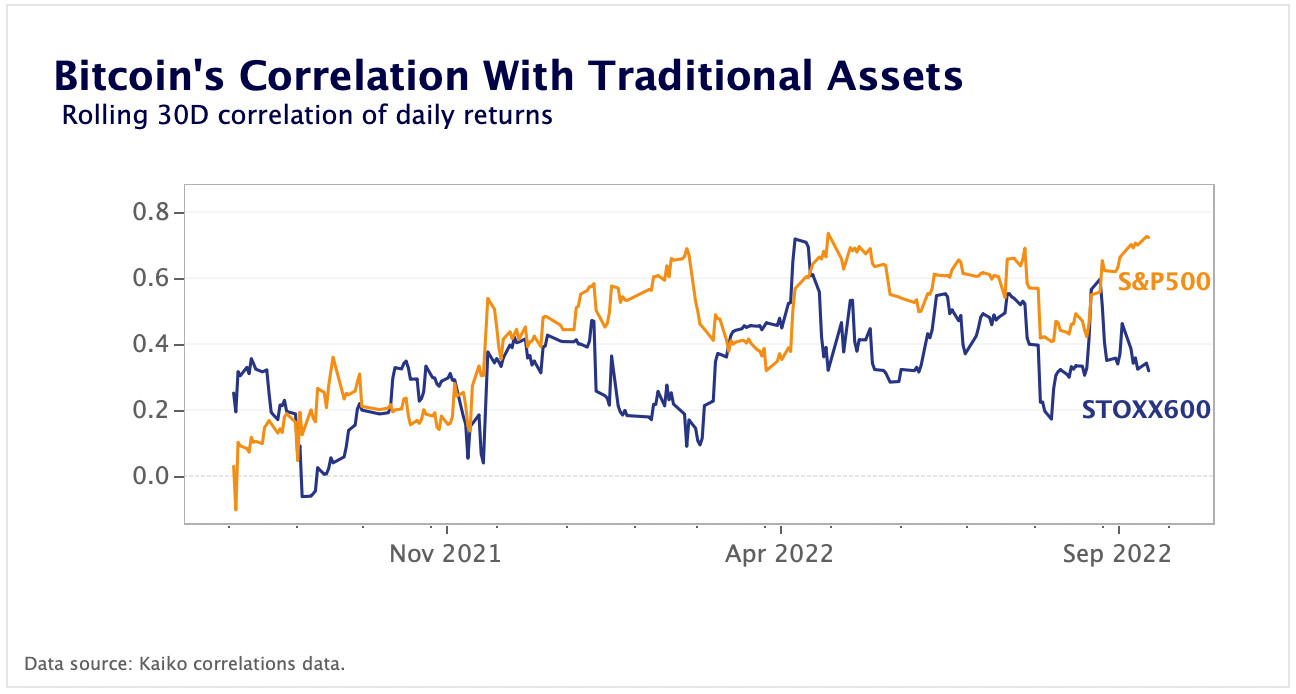A summarizing review of what has been happening at the crypto markets of the past week. A look at trending sectors, liquidity, volatility, spreads and more. The weekly report in cooperation with market data provider Kaiko.
The last 7 days in cryptocurrency markets:
- Price Movements: Proof-of-work tokens continue to plummet following the Merge, with ETHW down more than 70%.
- Market Liquidity: Coinbase has regained some market share to Uniswap amid stagnant on-chain activity.
- Derivatives: Open interest for ETH perpetual futures continues to climb post-Merge, with markets on FTX now equal to those on Binance.
- Macro Trends: The U.S. Dollar index hit multi-decade highs which has historically weighed heavily on risk assets.
Crypto markets stabilize as macro volatility surges
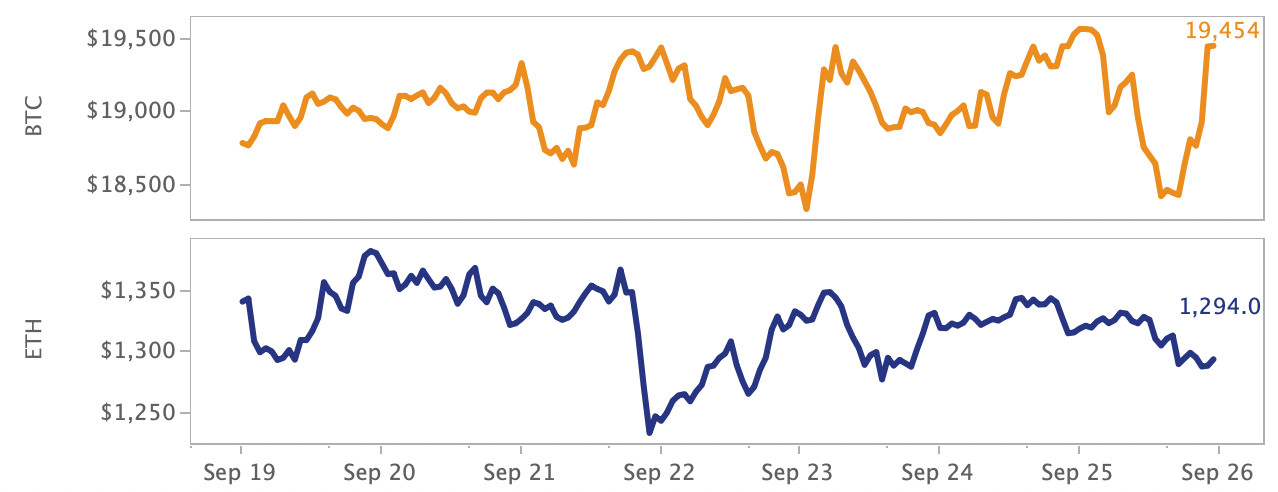
Global markets are spinning amid one of the most volatile macro environments in decades. Last week, the Fed raised interest rates another 75 bps and although the move was largely expected, traditional risk assets experienced a sharp sell-off with the S&P 500 barreling towards yearly lows. The U.S. Dollar’s surge to multi-decade highs has compounded global equity volatility, hitting EU and UK markets particularly hard. As of Monday morning, Bitcoin (BTC) and Etehreum (ETH) actually recovered some of their losses following the dramatic post-Merge sell-off, although a strong dollar historically bodes poorly for crypto.
There were some major updates this week on the crypto regulatory front: U.S. legislators proposed a two-year ban on algorithmic stablecoins, the EU finalized the text of its landmark crypto regulatory framework, and a judge ordered Tether to produce records showing USDT’s backing. In wider industry news, Nasdaq announced a crypto custody service, OpenSea expanded to the layer 2 Arbitrum, and Binance and FTX entered a bidding war for distressed lender Voyager Digital.
Lido’s LDO outperforms in Q3
Liquid staking protocol Lido’s native token LDO has outperformed in the third quarter of the year. Lido offers staking services for five blockchain networks, with Ethereum accounting for the vast majority of total value locked. Despite the market downturn in September, LDO is still up by a staggering 255%. The protocol’s total value locked also increased but at a much slower pace (30%) and remains well below its levels from earlier this year, although this is largely due to the collapse of the Terra network, for which Lido offered staking services. While the success of the Merge could provide a boost to Ethereum’s liquid staking market, Lido faces rising competition from centralized exchanges.
Overall, DeFi protocols have shown resilience despite the risk-off mood and recent hacks. Lending and borrowing protocol Compound, which recently launched a new feature allowing institutions to borrow against digital assets, has rallied in September and is up over 32% in Q3. MakerDAO’s token MKR was the worst performer of the lot with both its price and total value locked declining in Q3.
Proof-of-work tokens struggle post-Merge
After Ethereum’s successful transition to the proof-of-stake (PoS) consensus mechanism, around one third of ETH miners have migrated to other networks while the rest have halted operations, according to WuBlockchain. While hash rates for proof-of-work (PoW) networks such as Ravencoin, Ergo and Ethereum Classic have soared, most PoW tokens have dropped sharply in line with the broad market. The token for the newly launched Ethereum hard fork, ETHW, is the worst performer, dropping over 70% since the start of September. On Sept 24th, ETHW volumes surged to all time highs, which suggests strong selling pressure. Ravencoin's RVN is the only PoW blockchain token up for the month, although its total market cap is just $430mn.
Coinbase regains market share to Uniswap
In mid-July Kaiko reported that Uniswap (V2+V3) and Coinbase daily volumes were nearly even. Since then, this trend has begun to reverse, with Coinbase capturing 68% of volume last week. During the summer, Coinbase and Uniswap had weeks with a 55-45 split and on certain days Uniswap actually surpassed Coinbase’s volumes, which was a significant market event considering the secondary role decentralized exchanges have historically played to centralized platforms.
Volumes on centralized exchanges have been bolstered over the past month thanks to Merge-related speculation and repositioning. Meanwhile, on-chain activity has remained relatively flat, with little increase in volumes surrounding the Merge. Coinbase last week announced that it would be increasing fees for users with over $15mn in monthly volume, and we will be closely watching whether this impacts activity on the exchange over the coming months.
Now let’s take a closer look at how Coinbase’s volumes have fared in the bear market relative to a selection of the biggest spot exchanges. Below we chart cumulative trade volume in 2021 and 2022 for the time interval January to August. Despite a drop in cumulative volumes year-on-year, Coinbase has actually processed more trades than rival FTX, despite a drop in day-to-day market share.
Stablecoin market share diverges across exchanges
Tether’s USDT is by far the most popular stablecoin, commanding over 90% of aggregate stablecoin trade volumes on centralized exchanges. However, its market share does show slight variation depending on how regulated the exchange is. We compare the market share of USDT and its main competitor Circle’s USDC on 6 exchanges that list both assets.
On regulated US exchanges, USDC’s market share varies from 1% on Coinbase to 26% on Bitstamp. It is notable that USDC’s market share on Coinbase was fairly similar to Bitstamp’s - hovering around 26% - until the exchange merged its USD and USDC order books mid-July, effectively de-listing all USDC-denominated pairs. USDC’s share on Kraken and Binance.US – the US arm of Binance Global – has risen since the start of the year to 15% and 11% respectively. However, USDC has failed to gain traction on Huobi and Bitfinex - who shares a parent company with Tether - where its share of monthly trade volume remains below 2%.
Binance’s recent decision to delist USDC and move customers funds to its own stablecoin BUSD could pose a threat to USDT's dominance. The largest Indian exchange WazirX followed suit with a similar move last week. Tether remains by far the dominant stablecoin, but pending legislation in the US and continuing questions around its reserves could pose pose headwinds.
Risk assets face headwinds as global central banks ramp up inflation fight
Despite mounting US recession risks, the Fed is leading the way among developed countries, raising its policy rate by 75bps for a third time in a row, totaling a cumulative 300bps in rate increases YTD. The Swiss National Bank ended a seven-year period of negative rates with a similar rate move while the Bank of Sweden hiked by a full percentage point. Over the past year, global central banks have shifted from an almost decade-long regime of low interest rates and ample liquidity to higher rates for longer to fight rampant inflation.
Typically, monetary policy tightening negatively impacts risk-taking and asset valuations. Immediately following the 75bp hike, the S&P 500 slid nearly 200 points. Last week Bitcoin’s correlation with the S&P 500 hit a fresh all-time high of .8 after declining throughout the summer.
Interestingly, BTC's price movements are more tightly correlated to US equities compared with European markets (as measured by the STOXX600 index). The divergence between European and US equities performance has deepened over the past few months as the ongoing energy crisis and renewed geopolitical worries have weighed particularly heavily on EU markets.
U.S. Dollar hits 20-year high
The Fed's hawkishness and strong safe-haven demand continued to fuel the U.S. Dollar, which hit a fresh two-decade high last week. Bitcoin’s correlation to the greenback has been mostly negative over the past two years and is now nearing a yearly low of negative .5. The Dollar index (DXY) measuring the greenback’s performance relative to its main rivals is up 3.2% in September and 14.1% YTD . This has prompted an unprecedented intervention from the Bank of Japan - the first since 1998 - in defence of the Yen which touched the 145 level against the Dollar.


